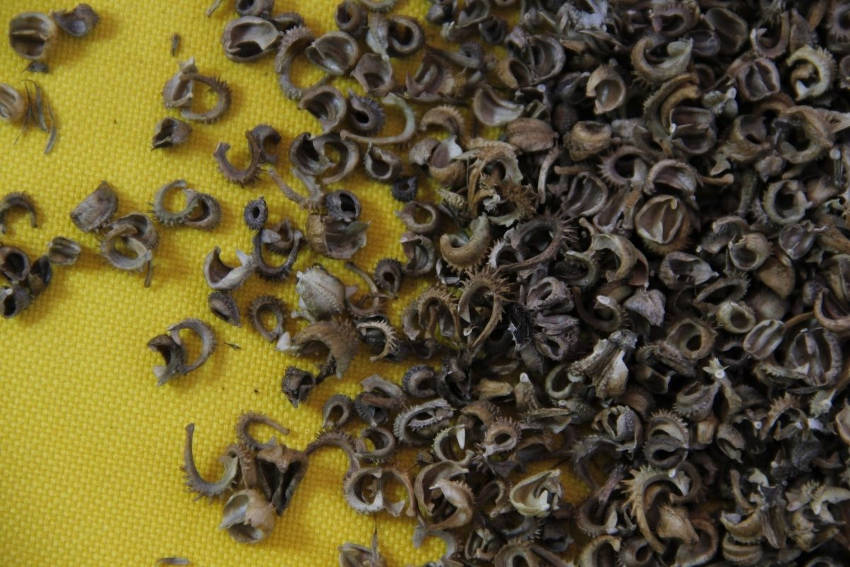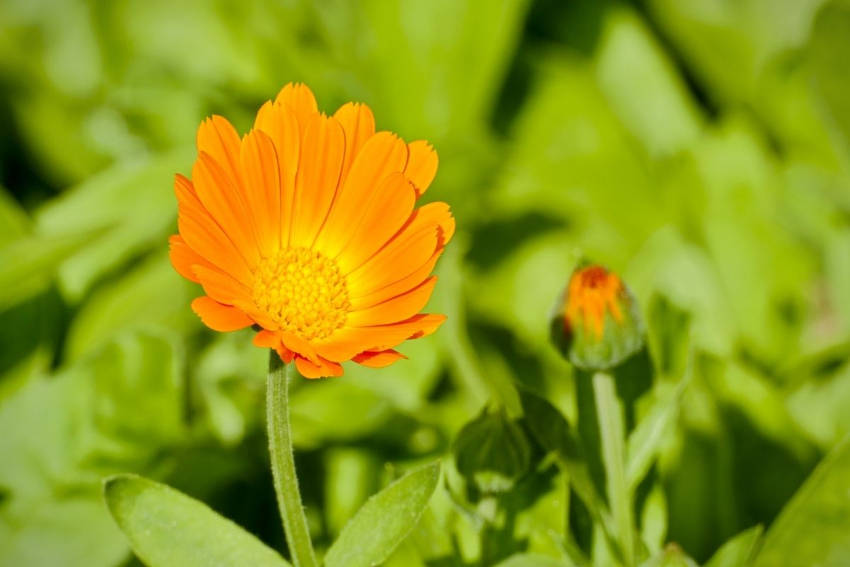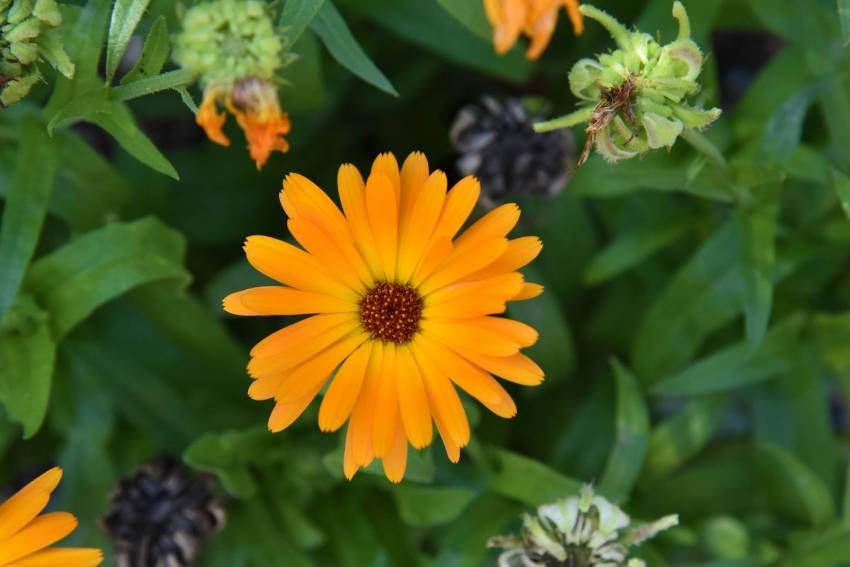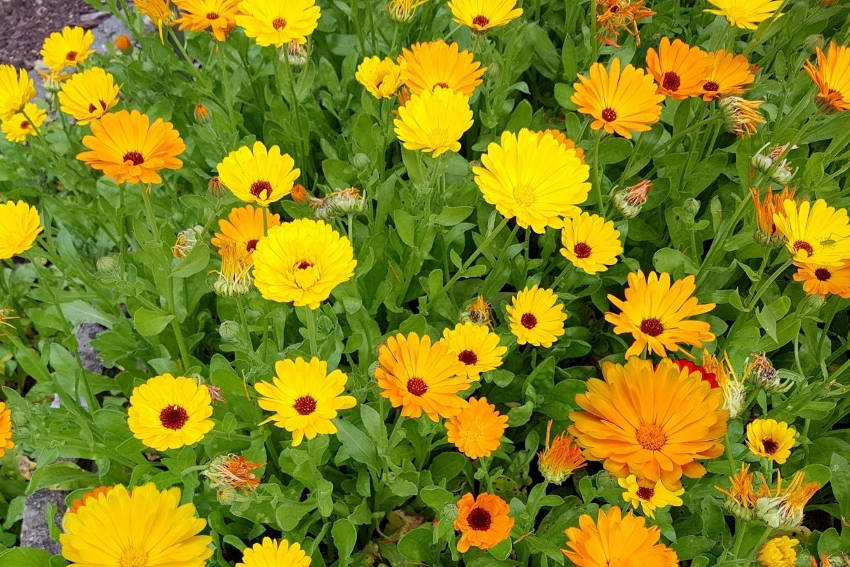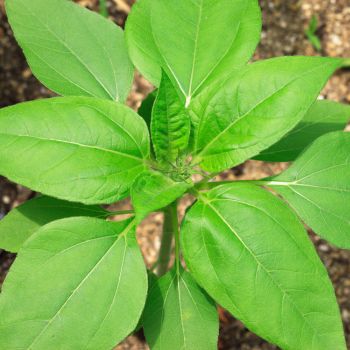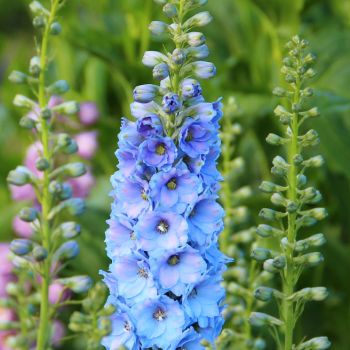Calendula officinalis offers a riot of orange, yellow, and cream colour across an exceptionally long flowering period. Combine that display with its long history of medicinal and culinary uses, and it's not hard to see why this plant is such a favourite in gardens the world over. Here's what you need to know to grow it for yourself.
Calendula or Marigold?
First of all, it's important to clear up some confusion over calendula's common names. Although it's sometimes known as pot marigold, English marigold, and common marigold, it actually belongs to a separate botanical group than most flowers bearing the marigold name.
The reasons for this are historical. Calendula was the original marigold flower familiar in medieval England. Later, a new family of similar-looking flowers was imported from the Mediterranean area.
Although these newcomers were actually part of the separate Tagetes genus, they were given the common names of French marigold and African marigold. Over time, this new group of flowers took over the marigold name, leaving calendula as the black sheep of the family.
In terms of flower growing, none of this really matters, as most kinds of marigolds provide the distinctively bright colour. But if you intend to enjoy the culinary and wellness benefits of calendula, it's important to make sure you're actually growing pot marigold, or Calendula officinalis. Other flowers named marigold can range from the merely inedible to the actively toxic.
Calendula's Appearance
Calendula is a member of the Asteraceae group of plants, along with sunflowers and the many varieties of daisies. This relationship is clear from its appearance, with calendula sharing the same open sunburst of narrow petals as its cousins. The flowers are usually bright yellow or orange, although cream, pink, and other unusual varieties are available. Both single and double-petalled flower types have been bred.
The plants themselves are bushy annuals which grow to 40-45cm in height, forming dense clumps of leaves with a spatula-like shape. The stems and leaves are a little hairy and sticky, which is one easy way to tell them apart from the smoother, non-culinary marigolds.
Calendula in the Garden
Calendula is a vigorous, undemanding plant that can often be found growing wild on wasteland. This enthusiastic growth is both a positive and negative point: it's easy to get a great display in your garden, but if you're not careful the plant can show invasive behaviour and spring up where it's not wanted.
One of the key points of calendula is its unusually long flowering season. The name itself comes from the Latin calendae, meaning the first day of the month. By some unknown leap of historical logic, this word was chosen to describe the almost year-round blooming that the plant can show in milder areas.
As well as providing colourful flowers, calendula can also be grown as a companion plant. It attracts a large range of beneficial insects including ladybugs, bees, lacewings and hoverflies.
Calendula in the Kitchen
Calendula isn't the most versatile of culinary plants, but it does have several valuable uses. Its bright flowers add vibrant colour and a mild saffron-like flavour to rice dishes, at a fraction of the price of saffron itself. This is most effective when the petals are dried and ground before use.
Fresh petals can be snipped over salads or light soups, where they add colour and a mild pepperiness, and can also make an impressive garnish for cakes and other desserts.
However, don't be tempted to try adding the leaves to salads or using them as a vegetable. While they're not actively harmful, they're usually unpleasantly bitter.
Calendula in the Medicine Cabinet
The 'officinalis' part of calendula's botanical name is an indication that the plant has had a long history of medicinal use. Mainly, it's been valued as a herbal treatment for skin problems including mild burns, rashes, and superficial cuts.
Extracts are often found in commercial skin care products from hand creams to nappy ointment, but it's easy to make your own treatments at home. Simply infuse the dried petals in water or a neutral oil, sieve, and apply directly to the affected area.
However, some people have a mild allergic reaction to members of the daisy family, so test first using a diluted mixture on a small area of skin. Also, because of this possible reaction, it's usually advised to use calendula tea as an external treatment only.
Growing and Harvesting Calendula
Calendula can grow in a range of conditions, but prefers full sun and well-draining soil that retains moisture without becoming waterlogged.
Sow seeds from early spring onward, either in seed modules, containers of around 20cm width and depth, or in the open soil spaced 45cm each way. The seeds should be sown at least a centimetre deep, as darkness is needed for germination.
Keep well watered until germination, which takes around a week. If you sow indoors, seedlings can be transplanted when they're 5-7cm in height.
Calendula requires little ongoing care apart from weeding and moderate watering, although some people find a fortnightly feed with a liquid rose formulation can encourage a better display.
The plants should come into bloom around 6-8 weeks after germination, and under good conditions will stay in flower throughout summer, autumn, and into early winter. If the winter is frost free, there may even be a second blooming in early spring.
Although the flowers can be cut for enjoying indoors, their habit of closing up in low light levels means they're not the most coveted of arrangement plants. Most people either leave them in the garden, or harvest them to be used in cooking or preparations.
To harvest, cut the whole flower head in late morning once the petals have fully opened, and trim off any green stem using sharp scissors. To dry, leave the heads for a couple of days in a warm room, or dry them more quickly in a dehydrator.
Regular cutting will prolong the flowering season, as will removing dying flowers when they start to go to seed. However, leaving some heads in place until the end of the season can help provide the next year's growth, as calendula is a ready self-seeder.
Common Growing Problems
Aphids or similar pests are rarely a problem when growing calendula however mites can sometimes infest the plants, causing distorted growth of the flower and leaf buds. Other signs of mites include yellow spots or bronzing on the leaves, and in extreme cases fine webbing is visible over parts of the plant. Treat with an organic insect spray if the problem is severe.
Calendula can also suffer from rust, a fungal infection that shows up as orange postule growths on the plant's green parts. Use an organic sulphur spray or other natural fungicide when you first see the effects.
Powdery mildew can be a problem, particularly in older plants growing in damper areas. You can reduce mould risks by ensuring good airflow around the plants, watering carefully without splashing, and avoiding evening watering so that the moisture doesn't linger overnight. Any badly affected plants should be removed and disposed of to stop the mildew from spreading.
And lastly, if your garden has a slug or snail problem, your calendula plants won't be exempt. Take your usual precautions, whether that's a gritty mulch, organic slug pellets, or beer traps.
But these problems aside, calendula is a very forgiving, easy-going plant that will justify its place in your garden with a long-lasting, colourful display throughout the warmer months.
